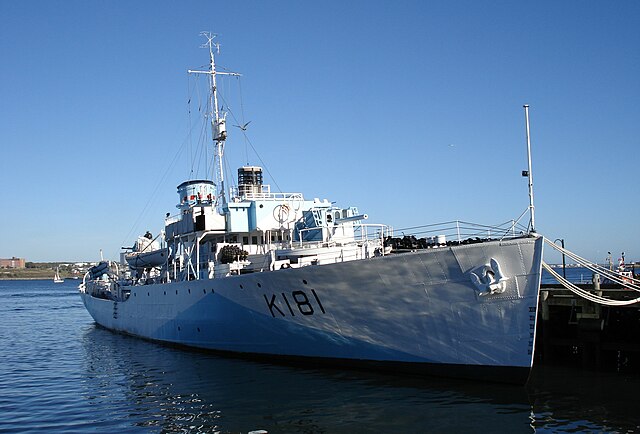HMS Hurricane was an H-class destroyer that had originally been ordered by the Brazilian Navy in the late 1930s with the name Japura, but was bought by the Royal Navy after the beginning of World War II in September 1939 and later renamed. When completed in June 1940, the ship was temporarily assigned to the Home Fleet before she began escorting convoys and conducting anti-submarine patrols. She was badly damaged during a German air raid on Liverpool in May 1941 and her repairs were not completed until the beginning of 1942. Hurricane was then assigned as the flotilla leader of Escort Group B1 assigned to the Mid-Ocean Escort Force, escorting convoys in the North Atlantic for the next two years. The ship was torpedoed by a German submarine on Christmas Eve 1943, and had to be scuttled the next day as she was unable to steam back to port.
HMS Hurricane
Mid-Ocean Escort Force (MOEF) referred to the organisation of anti-submarine escorts for World War II trade convoys between Canada and Newfoundland, and the British Isles. The allocation of United States, British and Canadian escorts to these convoys reflected preferences of the United States upon United States' declaration of war and the organisation persisted through the winter of 1942–43 despite withdrawal of United States ships from the escort groups. By the summer of 1943, United States Atlantic escorts were focused on the faster CU convoys and the UG convoys between Chesapeake Bay and the Mediterranean Sea; and only British and Canadian escorts remained on the HX, SC and ON convoys.
HMCS Sackville, preserved at Halifax Harbour, is believed to be the only survivor of the MOEF Flower-class corvettes
United States Coast Guard cutter Ingham, shown here in a post-war configuration, is one of the few larger MOEF escorts to be preserved
USS Reuben James was sunk while escorting convoy HX 156
USS Benson was one of the modern United States destroyers initially assigned to MOEF and later diverted to escort troop convoys





